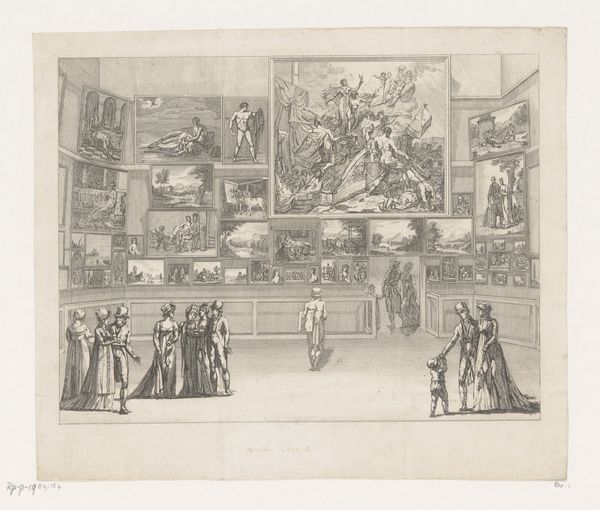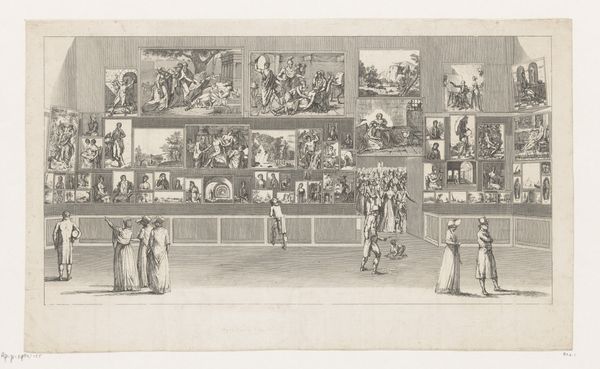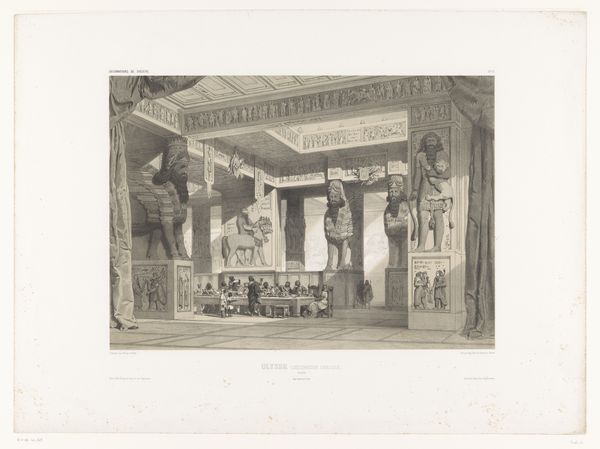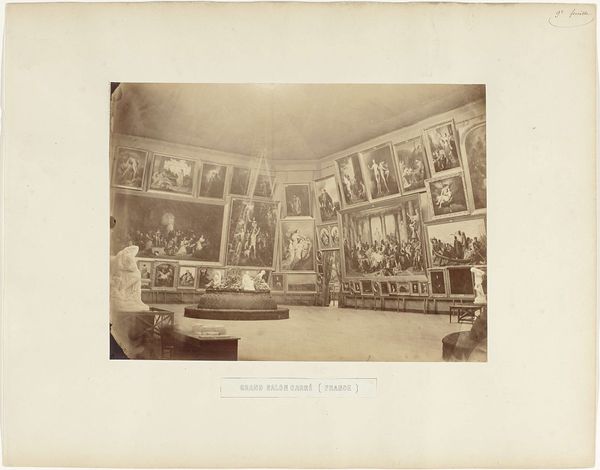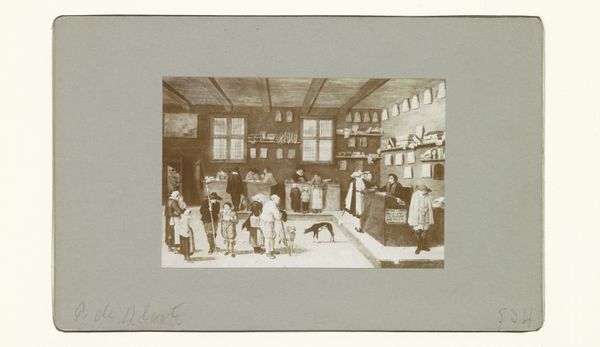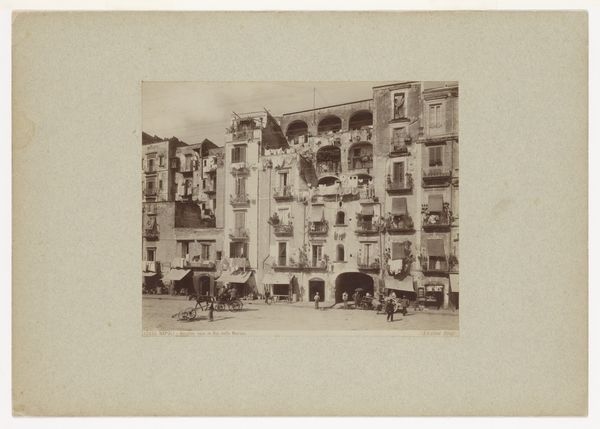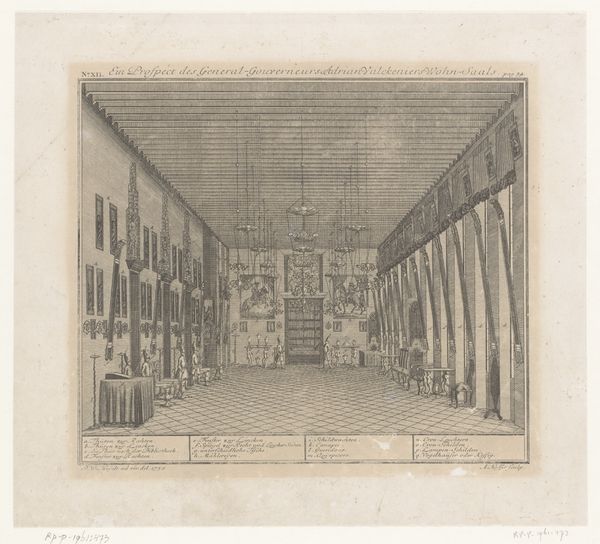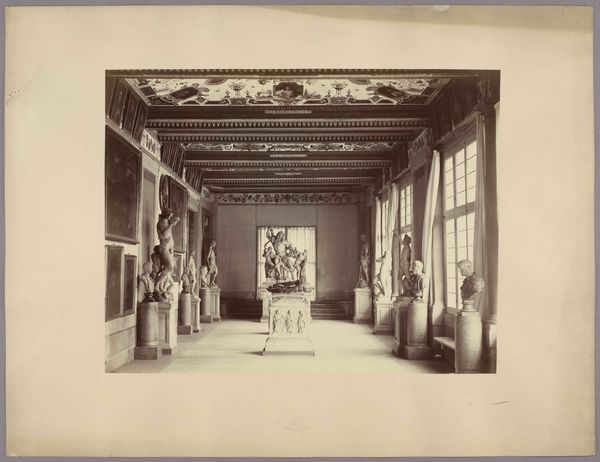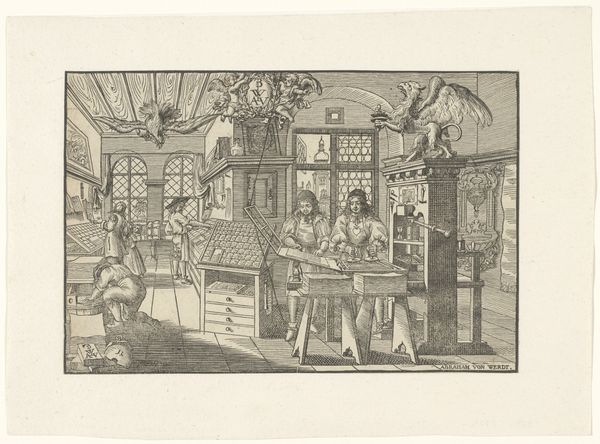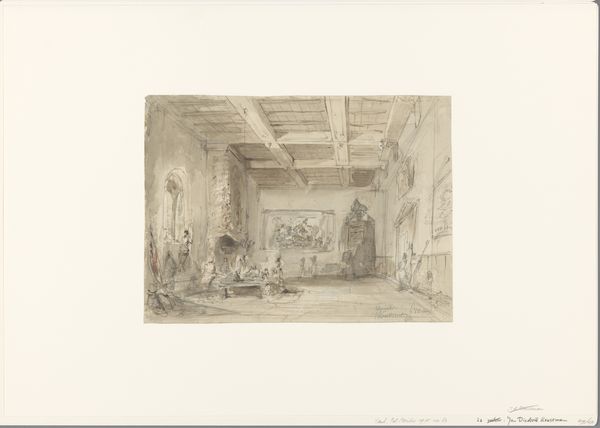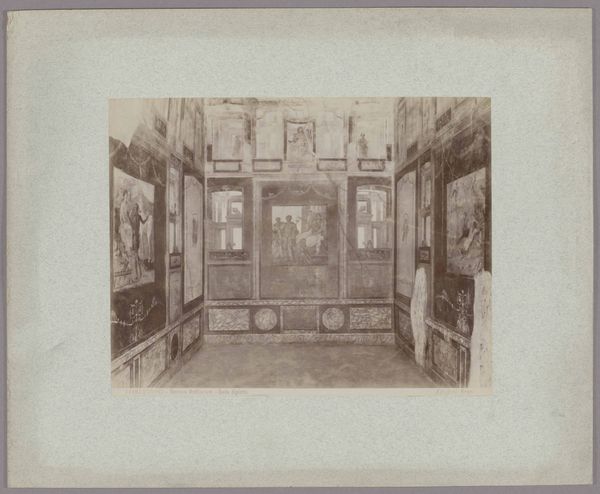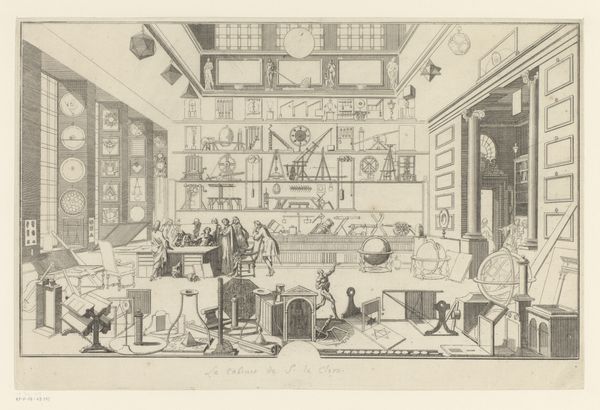
Gezicht op een schilderijengalerij met elf figuren in het Musée du Louvre 1800 - 1801
0:00
0:00
print, engraving
#
portrait
#
neoclacissism
# print
#
cityscape
#
genre-painting
#
history-painting
#
engraving
Dimensions: height 214 mm, width 251 mm
Copyright: Rijks Museum: Open Domain
Curator: Antoine Maxime Monsaldy created this print titled, "View of a Painting Gallery with Eleven Figures in the Musée du Louvre" around 1800 or 1801. Editor: It feels remarkably contemporary. The sheer density of images anticipates our image-saturated world. I wonder what emotional response the artist aimed for? Curator: Given the neoclassical art movement, I’d argue that it wasn’t aiming for overt emotional display as we understand it today. The Musée du Louvre had just been established as a public museum in 1793, and prints such as these circulated the images from the Louvre’s collection, playing a key role in democratizing access to high art and conveying civic ideals, however flawed in its time. Editor: That’s an astute point. Did the artist have specific figures in mind, given the print's title? Curator: It's difficult to ascertain the precise identities of each person depicted. In truth, the figures strike me as emblematic—intended to embody an informed public engaging with neoclassical virtues celebrated on the walls surrounding them. However, the lack of female artists being celebrated then becomes hard to ignore from a contemporary perspective. Editor: The historical moment is palpable, especially considering the social conditions around art. Seeing how art and its spectatorship reinforce certain social standards is intriguing. Are there recurrent iconographic themes that capture your attention? Curator: Given this image, there is this undeniable recurrence of the human form as it communicates ideas. Consider its place amongst images, architecture and humanity, what this engraving really shows is the act of constructing cultural memory itself. Editor: Ultimately, this piece allows us to see an older social order constructing itself through the experience of art and how these artworks themselves echo through our cultural memory. I find that strangely powerful. Curator: Indeed. This image grants us an unique point of reflection to recognize the history of cultural institution, in a time of political changes. A useful reminder of how the perception of art transforms with history and social expectations.
Comments
No comments
Be the first to comment and join the conversation on the ultimate creative platform.
